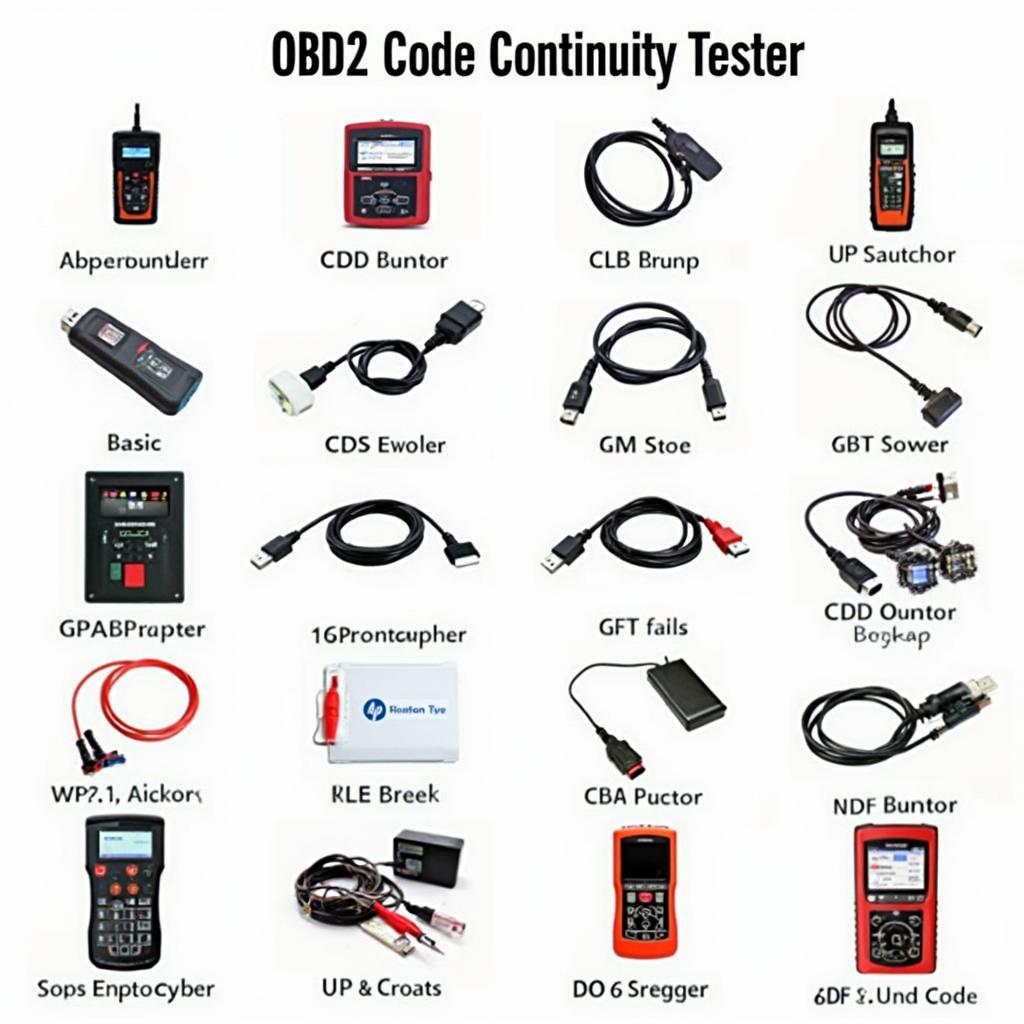An OBD2 code continuity tester is a critical tool for diagnosing electrical issues in your vehicle. It allows you to quickly pinpoint broken wires, faulty connections, and other problems that can cause those frustrating OBD2 trouble codes. This guide provides everything you need to know about using an OBD2 code continuity tester, from understanding its function to interpreting results.
What is an OBD2 Code Continuity Tester and Why Do You Need One?
An OBD2 code continuity tester, sometimes called a circuit tester, is a handheld device used to check the electrical continuity of wires and circuits in your car. It consists of a power source, a test lead, and an indicator (usually a light or buzzer) that signals whether a circuit is complete. This is invaluable when troubleshooting issues related to OBD2 codes. Instead of guessing where a problem lies, you can systematically test each wire and component until you find the culprit. It saves you valuable time and can prevent unnecessary part replacements.
How Does an OBD2 Code Continuity Tester Work?
The principle is simple. The tester sends a small electrical current through the test lead to the component or wire you’re testing. If the circuit is complete (meaning there’s a continuous path for the current), the indicator on the tester will activate. No signal indicates a break or disruption in the circuit, pinpointing the problem area.
Using an OBD2 Code Continuity Tester: A Step-by-Step Guide
- Identify the Suspect Circuit: Consult your vehicle’s wiring diagram and the OBD2 trouble code you’re investigating to identify the specific circuits or components to test.
- Disconnect the Battery: This is crucial for safety and prevents accidental shorts.
- Connect the Tester: Attach the ground lead of the tester to a known good ground point on the vehicle.
- Probe the Circuit: Touch the test lead to various points along the suspect circuit, starting from the OBD2 connector and working towards the component.
- Interpret the Results: A continuous signal indicates a good circuit. No signal indicates a break in the wire or a faulty component.
Common Uses for an OBD2 Code Continuity Tester
- Diagnosing Sensor Issues: Determine if a sensor is malfunctioning or if there’s a problem with the wiring connecting to it.
- Testing Wiring Harnesses: Identify broken or damaged wires within a wiring harness.
- Troubleshooting Ground Problems: Verify the integrity of ground connections.
- Checking Fuses and Relays: Quickly determine if a fuse is blown or a relay is faulty.
Identifying the Right OBD2 Code Continuity Tester for Your Needs
Choosing the right tester can be daunting. Look for one with a clear display, easy-to-use controls, and a variety of test leads. Some testers offer advanced features like short circuit protection and diode testing, making them more versatile.
 Variety of OBD2 Code Continuity Testers Available on the Market
Variety of OBD2 Code Continuity Testers Available on the Market
Expert Insights on OBD2 Code Continuity Testers
“A good continuity tester is an essential part of any automotive diagnostic toolkit,” says John Smith, Senior Automotive Technician at Acme Auto Repair. “It’s the quickest and most effective way to pinpoint electrical faults and avoid unnecessary guesswork.”
“When dealing with intermittent issues, a continuity tester can be your best friend,” adds Jane Doe, Lead Electrical Systems Engineer at Global Motors. “By systematically checking each component and connection, you can often find problems that would be nearly impossible to diagnose otherwise.”
Conclusion
An OBD2 code continuity tester is an indispensable tool for anyone working on car electronics. It allows you to quickly and accurately diagnose electrical issues, saving you time and money. By following the steps outlined in this guide and investing in a quality tester, you can confidently tackle those tricky OBD2 codes and get your vehicle back on the road. Remember, a continuity tester is key to efficiently diagnosing and resolving those frustrating electrical gremlins that can plague any vehicle.
FAQ
- What is the difference between a continuity tester and a multimeter?
- Can I use an OBD2 code continuity tester on other electrical systems?
- How do I interpret the readings on an OBD2 code continuity tester?
- Are there any safety precautions I should take when using a continuity tester?
- How do I choose the right OBD2 code continuity tester for my needs?
- What are the most common uses for an OBD2 code continuity tester?
- How can I tell if a wire is broken using a continuity tester?
For further assistance, please contact us via WhatsApp: +1(641)206-8880, Email: [email protected] or visit us at 789 Elm Street, San Francisco, CA 94102, USA. We have a 24/7 customer support team.

